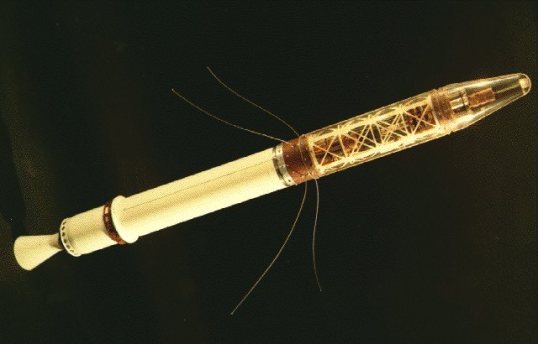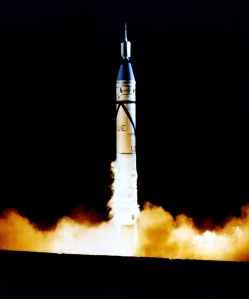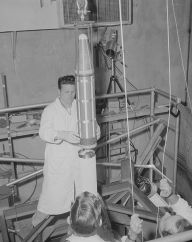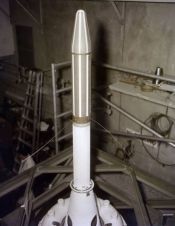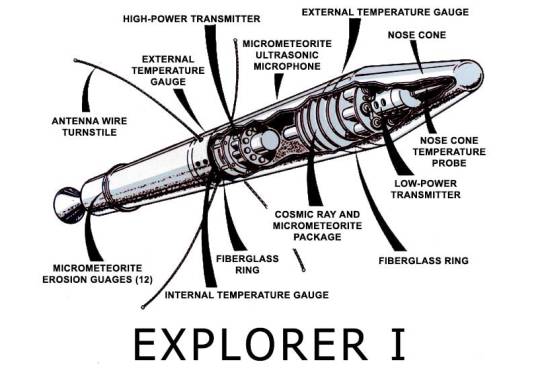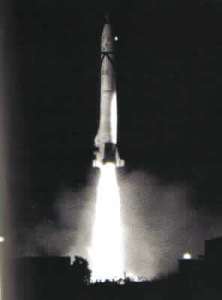May 23, 1958 – Explorer Signs Off
May 23, 1958: Explorer 1 Ceases Transmission
Explorer 1 was the United States’ first satellite launched into orbit. The mission followed the Soviet Union’s Sputnik 1 and 2, which historians see as the beginning of the Cold War Space Race.
The satellite was launched on January 31, 1958 atop the first Juno booster from Cape Canaveral, Florida. After confirming that Explorer 1 was indeed in orbit, at about 1:30 a.m. ET, a news conference was held in the Great Hall at the National Academy of Sciences in Washington, DC to announce it to the world.
Explorer 1 was designed and built by the California Institute of Technology’s JPL under the direction of Dr. William H. Pickering. The total weight of the satellite was 30 pounds (13.37 kilograms). Data from the instruments was transmitted to the ground by two antennas.
It was the first spacecraft to detect the Van Allen radiation belt, returning data until its batteries were exhausted after nearly four months. It remained in orbit until 1970, and has been followed by more than 90 scientific spacecraft in the Explorer series.

William Hayward Pickering, James Van Allen, and Wernher von Braun display a full-scale model of Explorer 1 at a crowded news conference in Washington, DC after confirmation the satellite was in orbit.
James Van Allen, whom the Van Allen radiation belt is named after, designed and built the scientific instrumentation of Explorer 1. They included:
- Five temperature sensors; one internal, three external and one on the nose cone.
- An acoustic detector to detect micrometeorite (cosmic dust) impacts. It responded to micrometeorite impacts on the spacecraft skin and detected 145 impacts of cosmic dust in 78,750 seconds.
- The Anton 314 omnidirectional Geiger-Müller tube, could detect protons with E > 30 MeV and electrons with E > 3 MeV. Most of the time the instrument was saturated… and we all know what that means 😉
- A wire grid detector, also to detect micrometeorite impacts.
Mercury batteries powered the high-power transmitter for 31 days and the low-power transmitter for 105 days. Explorer 1 stopped transmission of data on May 23, 1958 when its batteries died. Explorer 1 remained in orbit for more than 12 years. It reentered the atmosphere over the Pacific Ocean on March 31, 1970 after more than 58,000 orbits.
